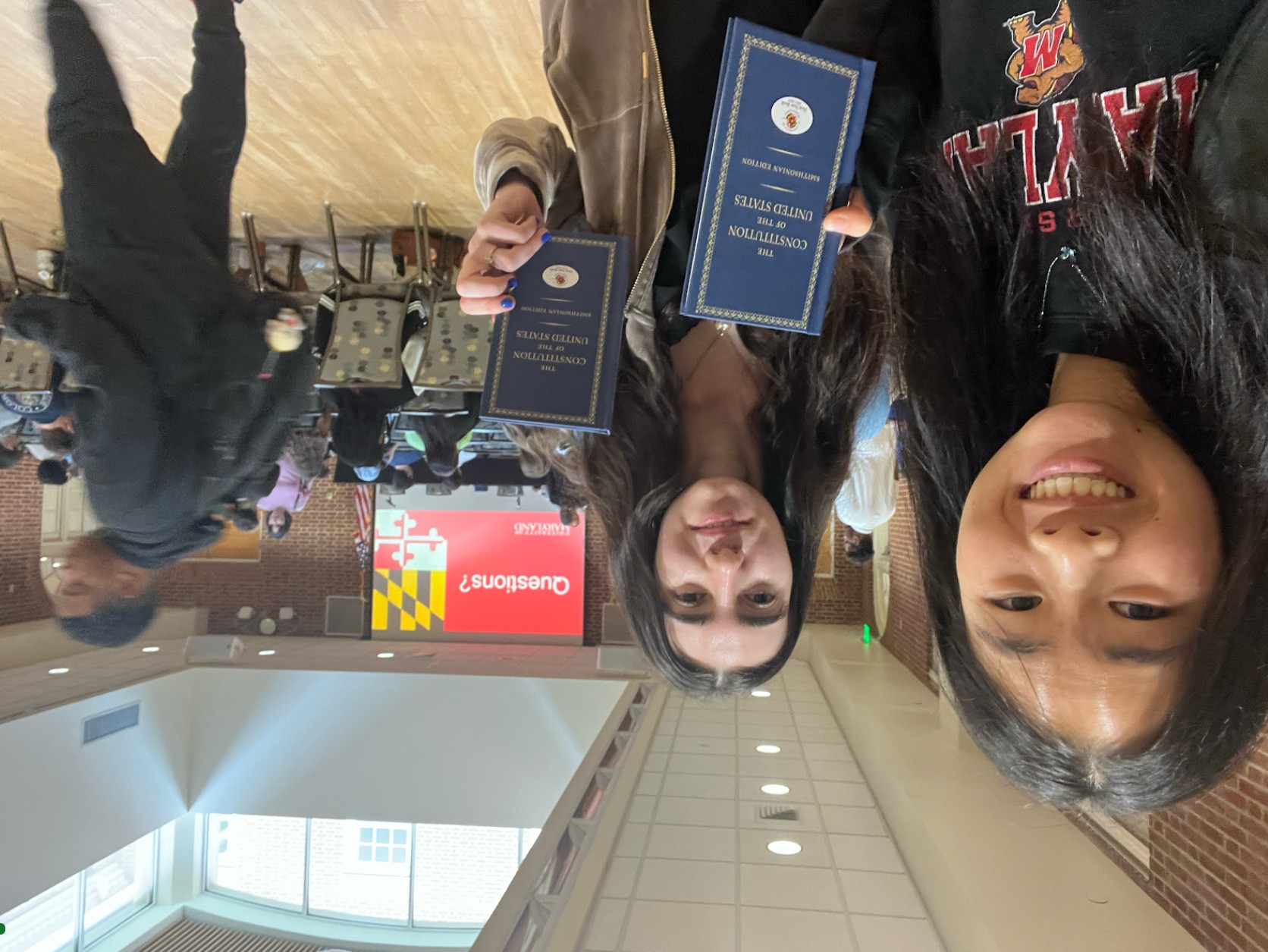Event name: Constitution Day: The 14th Amendment
Event time and place: Stamp Union, 9/17/2025 at 12pm

Picture of Laurel and myself before the start of the presentation in Prince George's Hall
While listening to Dr. Ross’s lecture, I found many of the points brought up to be quite convincing. His many discussions were simple to keep up with and were engaging for the audience. A key aspect of this was distributing the Constitution to the audience and referencing its sections in his slide presentation. In this segment of the lecture, he asked what particular sections and amendments of the Constitution state word-for-word, forcing the audience to question themselves and ask more questions about our rights and freedoms. Moreover, I appreciated him emphasizing the 14th Amendment and connecting it to today’s political debates and ideas, stating how presently, the president is attempting to change the citizenship process and status for many, similar to that of the discussed past laws and ideologies.
In addition to the convincing points discussed above, numerous examples were not so convincing from my perspective. Because Dr. Ross decided to center his presentation on past laws and events, especially the 14th Amendment, I feel that a focus on applying these pieces of information to today’s U.S. politics would have been significantly more convincing for the audience. Adding onto the discrimination faced by non-whites in the past few centuries, he could have spoken of the discrimination faced by different groups of people (e.g., blacks, Hispanics, women, and people of the LGBTQ+ community) presently, and how there is still much inequality faced today. A critical part of this would be to further stress the current federal administration and state governmental changes concerning such matters and to realize how these “past” issues are still incredibly relevant today. Some of these relevant issues would include changes made in immigration policies and public school curricula, sparking intense discussion and controversy.
While we have made major progress throughout the centuries, it is important to acknowledge the fact that there is still so much that needs to be done to greatly decrease discrimination and racism, and that it is not a simple issue to tackle in such a large, diverse, and complex nation, where its citizens have very different views and ideologies. However, what is certain is that we, as a nation, can attempt to work together, listening to others and understanding the differing perspectives around us. It is only through this pathway that we shall be able to rise above by learning from past mistakes and choosing to improve on the critical issues of this ever-changing country, including equality for all.


